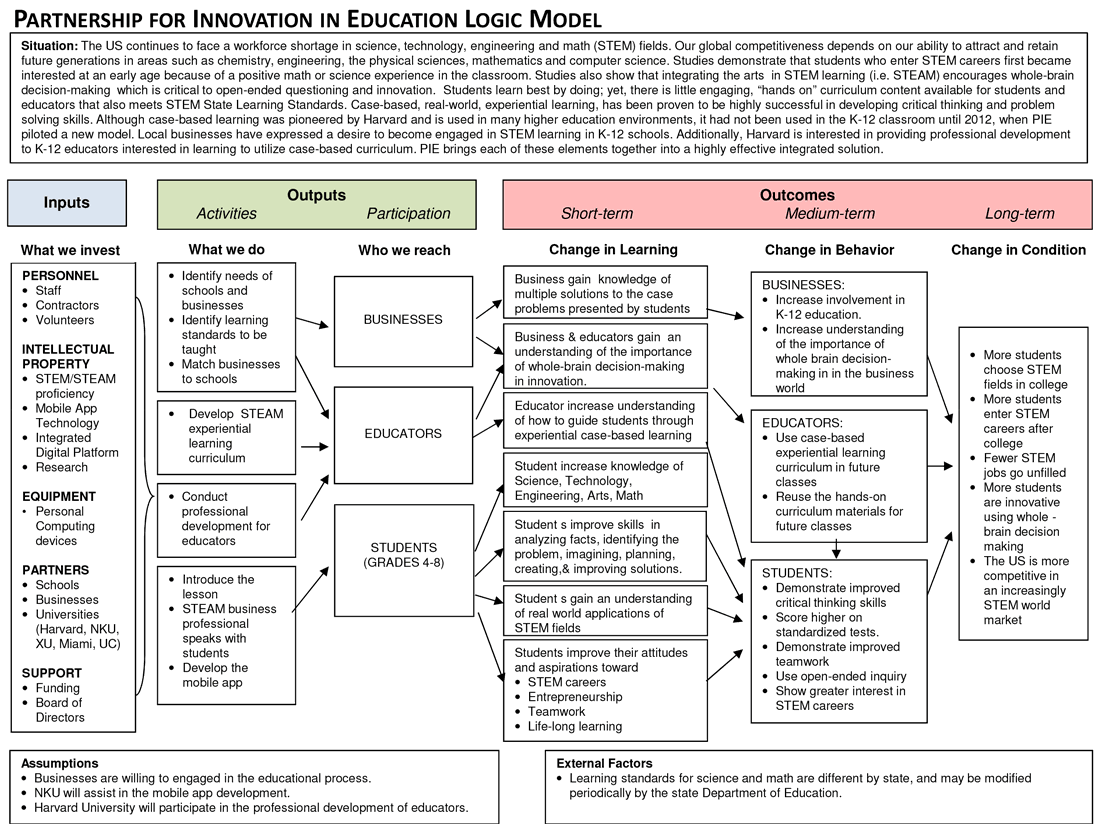
Logic Chart
Who We ArePartnership for Innovation in
Education Logic Model
Situation:
The US continues to face a workforce shortage in science, technology, engineering and math (STEM) fields. Our global competitiveness depends on our ability to attract and retain future generations in areas such as chemistry, engineering, the physical sciences, mathematics and computer science. Studies demonstrate that students who enter STEM careers first became interested at an early age because of a positive math or science experience in the classroom. Studies also show that integrating the arts in STEM learning (i.e. STEAM) encourages whole-brain decision-making which is critical to open-ended questioning and innovation. Students learn best by doing; yet, there is little engaging, “hands on” curriculum content available for students and educators that also meets STEM State Learning Standards. Case-based, real-world, experiential learning, has been proven to be highly successful in developing critical thinking and problem solving skills. Although case-based learning was pioneered by Harvard and is used in many higher education environments, it had not been used in the K-12 classroom until 2012, when PIE piloted a new model. Local businesses have expressed a desire to become engaged in STEM learning in K-12 schools. Additionally, Harvard is interested in providing professional development to K-12 educators interested in learning to utilize case-based curriculum. PIE brings each of these elements together into a highly effective integrated solution.

